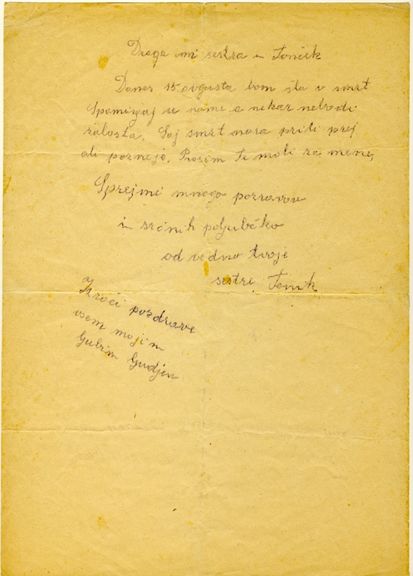Difference between revisions of "Stari Pisker Prison"
(INFOBOX) |
(fixed links) |
||
| Line 10: | Line 10: | ||
| street = Prešernova 20 | | street = Prešernova 20 | ||
| town = SI-3000 Celje | | town = SI-3000 Celje | ||
| − | | website = | + | | website = https://www.muzej-nz-ce.si/en/permanent-exhibitions/stari-pisker-the-memorial-space-for-the-victims-of-nazi-violence/ |
| email = mnzc@guest.arnes.si | | email = mnzc@guest.arnes.si | ||
| telephone = 386 (0) 3 428 6410 | | telephone = 386 (0) 3 428 6410 | ||
| Line 42: | Line 42: | ||
== External links == | == External links == | ||
| − | * [ | + | * [https://www.muzej-nz-ce.si/en/permanent-exhibitions/stari-pisker-the-memorial-space-for-the-victims-of-nazi-violence/ Stari Pisker Memorial web page] |
* [http://en.wikipedia.org/wiki/Stari_pisker_Prison Stari pisker article on Wikipedia] | * [http://en.wikipedia.org/wiki/Stari_pisker_Prison Stari pisker article on Wikipedia] | ||
Revision as of 18:38, 16 March 2020
When the building of the former Minorite monastery in the centre of Celje was reshaped into a penitentiary in the 19th century, locals gave it the name Old Pot. Prior to 1941 it had been used as a prison for women; during the World War II, German occupation forces used the site to commit many atrocities against civilians. In six out-of-court executions 374 hostages were shot in the yard, many others were tortured there. In December 1944 partisans attacked prison and freed 127 political prisoners.
In 1965 the prison was opened as a memorial site with a memorial courtyard and a memorial room in the former torture-chamber. It was later renovated in 1995. Today, the building surrounding the memorial's inner yard is still used as a re-education establishment for juvenile offenders.






